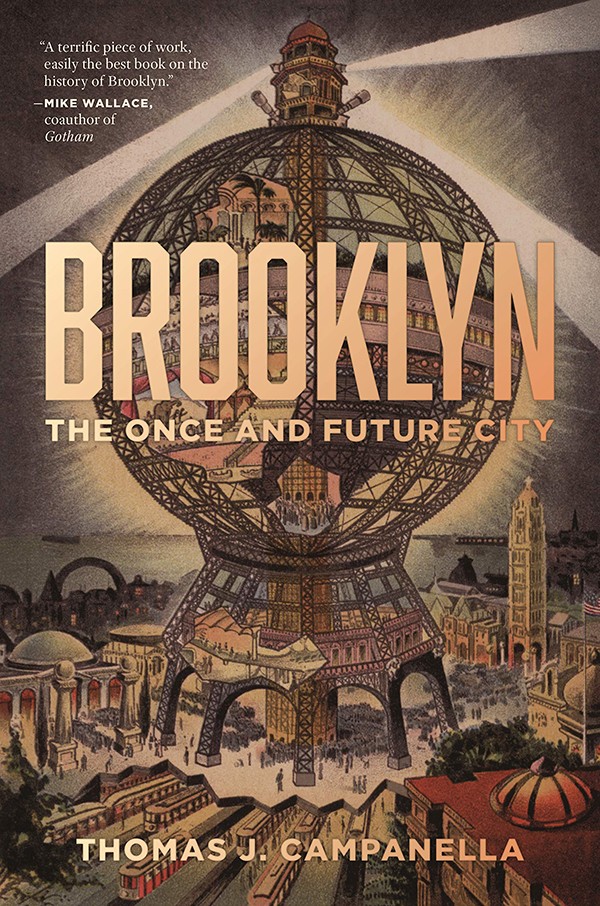Thomas J. Campanella, MLA '91, associate professor of city and regional planning, takes a long and engaging look at his hometown in "Brooklyn: The Once and Future City" (2019), a book that features the characters, places and infrastructure of a city that has had its share of ups and downs in 400 years.
The book, released Sept. 10, was an eight-year labor of love for Campanella, who now splits his time between Ithaca and his boyhood home in south Brooklyn's Marine Park neighborhood. As such, it unveils many hidden gems buried in Brooklyn's rich history.
These gems include Deborah Moody, a 17th-century planner who created the town of Gravesend, among the first in America to guarantee religious freedom; ill-fated efforts to create a deep-water seaport in Jamaica Bay and the world's greatest pleasure dome at Coney Island; and New York City's first municipal airport. There are detailed descriptions of racetracks and amusement parks, as well as highways and housing projects.
Brooklyn's continuously evolving population is well documented here, from Native Americans and Dutch traders to throngs of European immigrants who carved out neighborhoods of their own, and from a middle-class mass exodus in the 1970s and '80s to today's gentrification.
"One of the main goals was to present the city as a memory palace - to show the extraordinary richness of individual places, many of which have long-forgotten or hidden significance," Campanella said. "The neighborhoods in Brooklyn each have meaning and significance - there are layers of history everywhere."
This book will appeal to those with a penchant for history and urban development, but Campanella believes it will resonate most strongly with Brooklynites, past and present.
"It was an excavation project to show people what can be found in their backyards," he said. "It's for Brooklyn - if people there never look at their street the same way again after reading my book, then I will have done my job."
After earning his master's at Cornell in landscape architecture, Campanella received a Ph.D. in urban studies and planning from the Massachusetts Institute of Technology in 1999.
Campanella's previous books include "The Concrete Dragon: China's Urban Revolution and What It Means for the World" (2008) and "Republic of Shade: New England and the American Elm" (2003), winner of the Spiro Kostof Award from the Society of Architectural Historians.
Jay Wrolstad is a freelance writer for the College of Architecture, Art and Planning.







